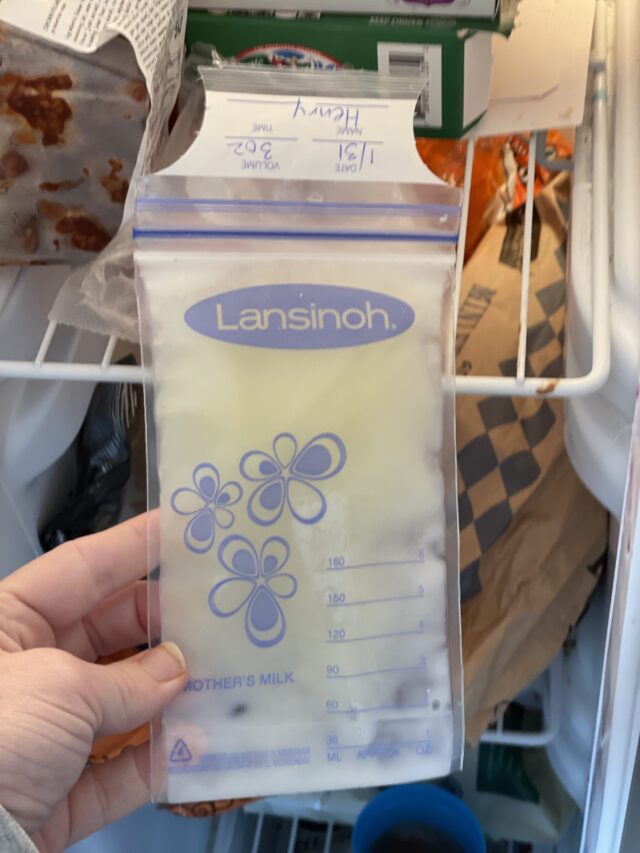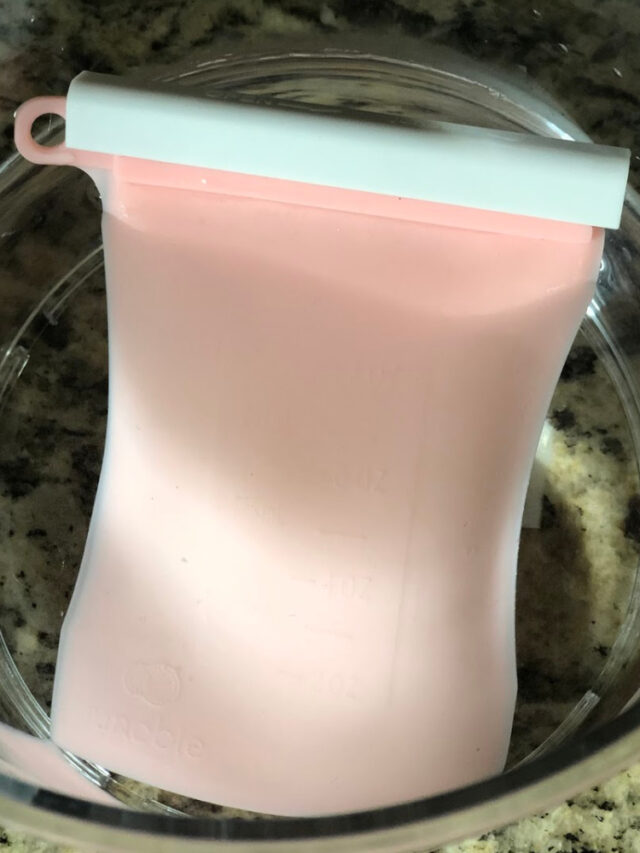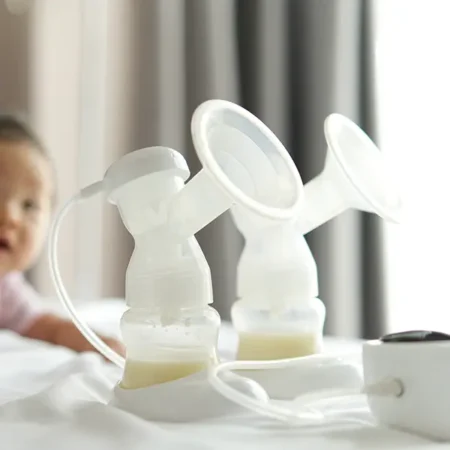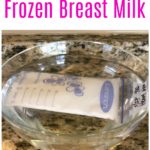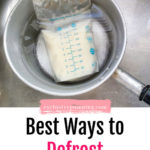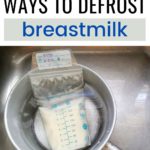There is nothing worse than thawing a bag of breast milk and having the bag leak. Not only is it heartbreaking to see your milk go to waste, it can also be a mess! Here are three methods for defrosting breast milk, and how you can avoid losing milk while doing each of them.
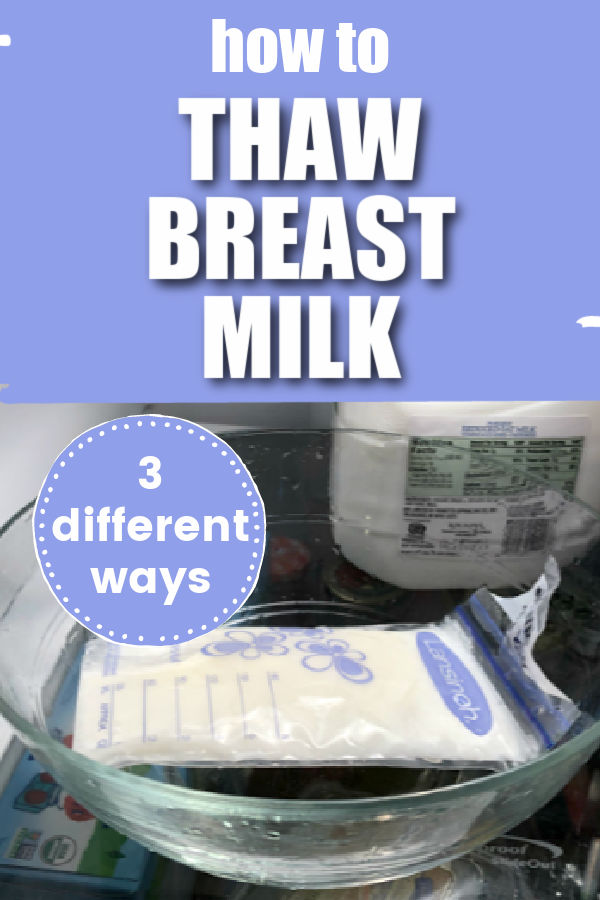
This post may contain affiliate links, which means that if you click a link and take action, I may make a small commission at no additional cost to you. I only recommend products I love! More info here.
There are three ways to defrost frozen breast milk:
- In the fridge
- In cold water
- In warm water
Breast milk should never be left out at room temperature to thaw or put in the microwave.
Here are the pros and cons of each method.
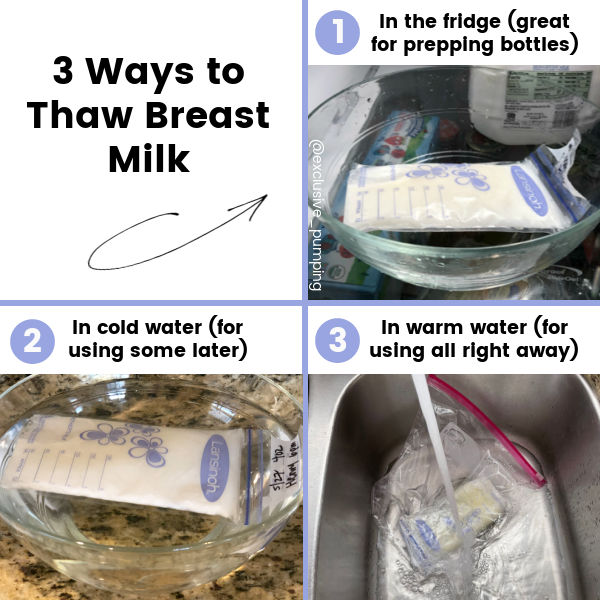
Thawing Frozen Breast Milk in the Refrigerator
Best for: Later use/prepping bottles
The preferred way to defrost breast milk is in the refrigerator, because it causes less fat loss than other methods.
However, it’s also the slowest way to thaw your milk.
How long it will take to thaw depends on a bunch of things (like how much milk is in the breast milk bag, the temperature of your fridge, how much other food is in your fridge). Generally speaking, I would take it out of the freezer and put it in the fridge about 12-24 hours before you need it defrosted.
To do this, put your breast milk storage bag in a clean bowl, and stick it in the fridge to thaw. If you’d like, you can cover it with plastic wrap in case of leaks (to prevent the leaked breast milk from being exposed to outside bacteria).
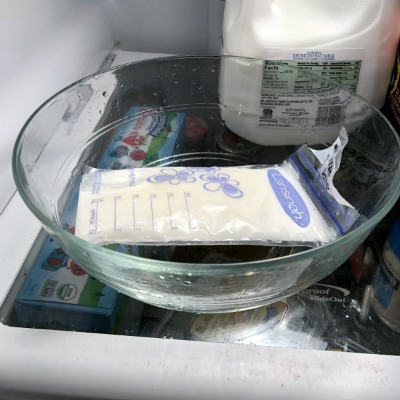
When it’s done thawing, you can pour the milk into a bottle and you’re all set. (You may want to use your breast shield as a funnel to minimize spills).
You should use milk defrosted in the refrigerator within 24 hours after it finishes thawing (meaning there are no more ice crystals), and within 2 hours after warming.
Defrosting Frozen Milk in Cold Water
Best for: Using some of the milk immediately, but not all of it
If you don’t plan to use all of the milk stored in the bag right away, or if you are preparing bottles to be used later and don’t want to wait for it to defrost in the fridge, you can thaw milk in cold water.
You should only use this method for milk you plan on using in the next 24 hours.

Here are step by step instructions for defrosting breast milk in cold water:
1. Prep the water.
If you are near a sink when you’re defrosting the milk, run the water until it’s cold, plug it, and then fill it up enough to cover the bag of breast milk.
You can also put cold water in a bowl as in the photo above.
2. If you’re concerned about leaks, put the bag of breast milk into a new zip-top plastic bag.
The zip-top bag will catch any leaks so that the milk isn’t lost. Another alternative is thawing in a silicone reusable breast milk bag (since these don’t leak). You can see how I did this in the below stories.
Put the bag in the water, and let it sit for a few minutes.
3. When it’s thawed, take the bag out of the sink and pour into a bottle.
At this point, you should be able to tell if the breast milk bag leaked into the zip-top bag.
If it didn’t leak, just go ahead and pour it into the bottle you’re going to use to feed. You can use a flange as a funnel to avoid spilling while you transfer the milk.
If it the breast milk bag did leak, keep the breast milk bag in the plastic bag, open it, and carefully pour the milk from the breast milk bag into the bottle, holding it so that the milk that leaked into the zip-top bag doesn’t spill out. Then, once the breast milk bag is empty, take it out of the plastic bag. Then pour any milk that leaked into the zip-top bag into the bottle.
Once the milk has thawed, you can put it in bottles to store in the refrigerator to be used within 24 hours, or you can warm it and feed immediately. You should use the milk within two hours after warming it.
Thawing Frozen Milk in Warm Water
Best for: Using all milk in the bag right away
The fastest and easiest way to defrost breast milk that you plan to use immediately is to put the breast milk storage bag into warm water, as this will defrost and warm the milk at the same time. (Lukewarm water is preferred to very hot water.)
However, you should only use this method if you plan to use all of the milk in the bag – once breast milk has been warmed, it should be used within 2 hours.
To do this, you can just fill the bottom of your sink or a clean bowl with warm water, throw a bag of breast milk in, and wait a few minutes, following the same steps as above.
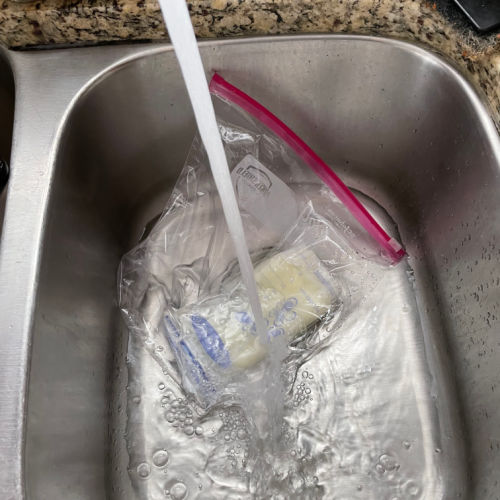
Note that you should always discard plastic breast milk storage bags; they are not reusable like the silicone bags.
I hope this answers all of your questions about thawing breast milk! Leave any questions you have on defrosting breast milk in the comments below!
References-
- Academy of Breastfeeding Medicine. “ABM Clinical Protocol #8: Human Milk Storage Information for Home Use for Full-Term Infants, Revised 2017.” https://abm.memberclicks.net/assets/DOCUMENTS/PROTOCOLS/8-human-milk-storage-protocol-english.pdf
- Bonyata, Kelly. “Breastmilk Storage & Handling.” https://kellymom.com/bf/pumpingmoms/milkstorage/milkstorage/
- Bonyata, Kelly. “My power went out and I have breastmilk in the freezer – Help!” https://kellymom.com/hot-topics/frozen-milk-power-outage/
- CDC. “Proper Storage and Preparation of Breast Milk.” https://www.cdc.gov/breastfeeding/recommendations/handling_breastmilk.htm
